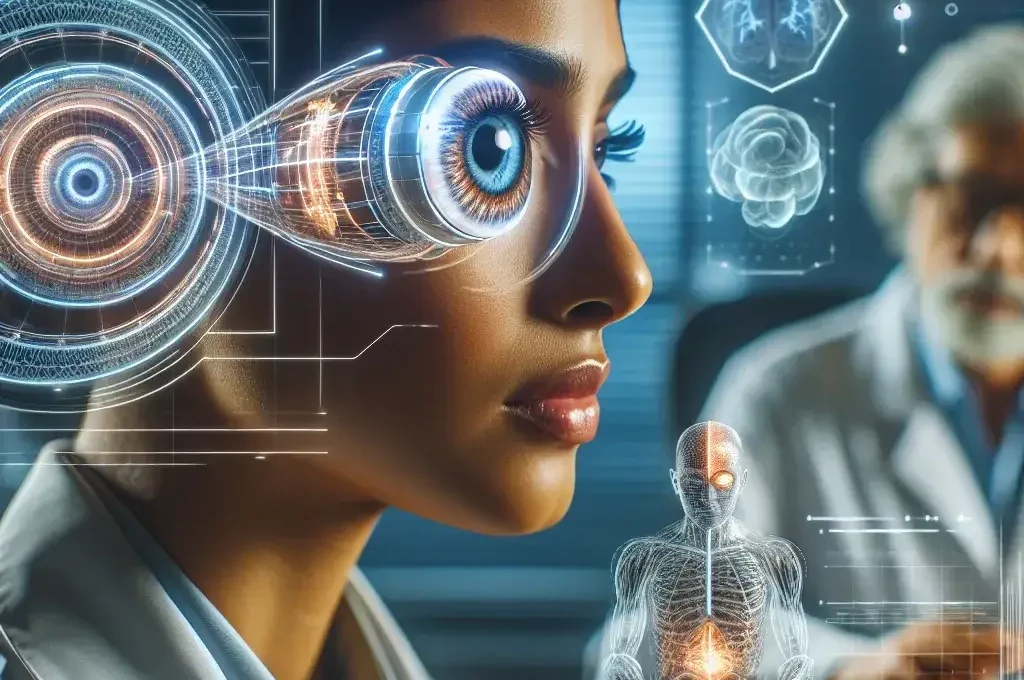Introduction
The advent of artificial intelligence has catalyzed remarkable innovations across various fields, notably in medical technology. Among these innovations, AI-powered bionic eyes represent a significant leap forward in efforts to restore sight for individuals suffering from visual impairments. This article delves into the current state of clinical trials involving AI bionic eyes, exploring their potential benefits, challenges, and what the future holds for this groundbreaking technology.
Understanding Bionic Eyes
Bionic eyes, or retinal prostheses, are devices designed to replace or enhance the function of natural eyes damaged by disease or injury. These devices work by converting visual information into electrical signals that can stimulate the remaining healthy cells in the retina. With advancements in AI, researchers are developing systems that can interpret visual data more effectively, leading to enhanced functionality for users.
Historical Context
The concept of bionic eyes is not new. The first retinal implant was introduced in the 1990s, but these early models provided limited vision and were often met with skepticism regarding their efficacy. Over time, however, technological improvements and a better understanding of how the brain processes visual information have led to more sophisticated designs. In recent years, AI has emerged as a pivotal component in enhancing the capabilities of these devices.
The Role of AI in Bionic Eyes
AI algorithms can process vast amounts of visual data, allowing for real-time image recognition and interpretation. This capability is crucial for bionic eyes, as it enables the device to adjust to different lighting conditions, recognize faces, and even identify obstacles. Here are some of the notable features AI brings to bionic eyes:
- Adaptive Vision: AI algorithms can learn from user interactions and adapt to their visual preferences, improving overall experience.
- Enhanced Image Processing: Advanced image processing techniques help clarify images, making them more discernible to the user.
- Real-Time Feedback: AI systems can provide immediate feedback to users, allowing them to navigate their environment with greater confidence.
Current Clinical Trials
As of 2023, several clinical trials are ongoing to evaluate the efficacy and safety of AI-powered bionic eyes. These trials aim to assess how well these devices restore partial sight and improve the quality of life for participants. Key players in this research include universities, tech companies, and medical institutions.
Case Study: The Argus II System
The Argus II Retinal Prosthesis System was one of the first bionic eye devices to receive FDA approval. Although it relied on basic image processing techniques, it laid the groundwork for future innovations. Recent iterations are incorporating AI to enhance performance. Preliminary results from clinical trials indicate that users can perceive shapes and movement, significantly improving their ability to interact with their environment.
Benefits of AI-Powered Bionic Eyes
The potential benefits of AI-powered bionic eyes extend beyond merely restoring sight:
- Improved Quality of Life: Users report better mobility and independence, as well as enhanced social interactions.
- Customization: AI systems can tailor visual inputs based on individual user needs, offering a personalized experience.
- Empowerment: Users gain more control over their visual environment, contributing to a sense of autonomy.
Challenges and Considerations
Despite the promising advancements, several challenges remain in the development and implementation of AI-powered bionic eyes:
Technical Challenges
Developing a device that can seamlessly integrate with the human visual system is complex. Issues such as signal processing speed, durability of components, and compatibility with biological tissues need to be addressed.
Ethical Considerations
The introduction of AI into medical devices raises ethical questions. Concerns about data privacy, consent, and the potential for disparity in access to these technologies must be carefully examined. Ensuring equitable access to advanced treatments is paramount.
Future Predictions
Looking ahead, the future of AI-powered bionic eyes appears promising. Researchers are optimistic about the potential for even more sophisticated devices capable of providing near-normal vision. Innovations in machine learning and computer vision may lead to features such as:
- High-Definition Vision: Future devices could provide clearer and more detailed images, mimicking natural sight more closely.
- Integration with Augmented Reality: Bionic eyes could potentially overlay digital information on the real world, enhancing navigation and interaction.
Real-Life Impact and Cultural Relevance
The development of AI-powered bionic eyes is not just a technological feat; it holds significant cultural relevance. For many individuals with visual impairments, the ability to see again or to improve their sight can profoundly affect their lives. Stories of those who have participated in clinical trials illustrate the human aspect of this technology. Many report a renewed sense of hope and purpose, emphasizing that vision is not just about sight but also about experiencing life fully.
Conclusion
AI-powered bionic eyes represent a fascinating intersection of technology and human experience. As clinical trials continue to yield promising results, the potential for these devices to restore partial sight and improve quality of life is becoming increasingly evident. With ongoing research and innovation, we stand on the precipice of a new era in vision restoration, one that leverages the power of AI to redefine what it means to see.
Call to Action
For those interested in following the latest developments in AI-powered bionic eyes and supporting research efforts, consider engaging with organizations dedicated to vision restoration. Together, we can pave the way for a brighter, more inclusive future for individuals with visual impairments.

